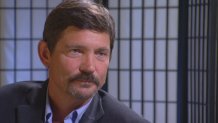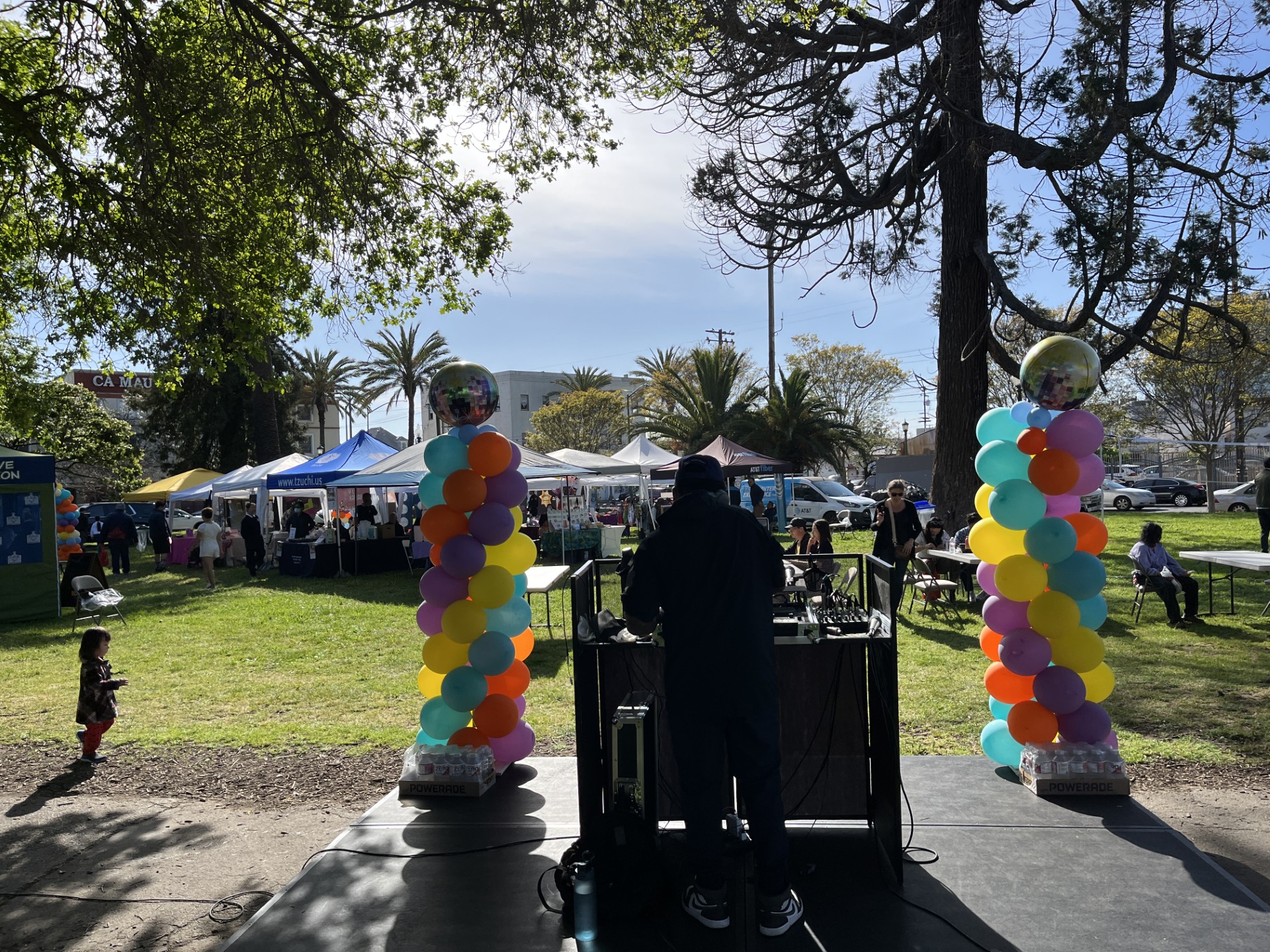San Francisco’s political and spiritual leaders recently hailed the city’s newest tallest building, the 61-story Salesforce tower, as the centerpiece of its ongoing building boom. But residents who live three miles away are left to wonder whether the boom is taking a toll on their health.
For the past year, Dr. Ray Tompkins, a retired chemistry teacher and environmental activist, has been sampling the air around Amador Avenue in Hunter’s Point. That’s where three companies, Cemex, Central Concrete and Hanson Aggregates, mix together raw materials needed to meet the city’s growing demand for concrete.

Tompkins points to the large piles of sand, gravel and other materials. “There’s a constant air dust leaving those piles,” he says, adding that he often sees disturbingly high readings of invisible dust particles on his handheld Dylos monitor. “You could see the dirt going down the street, coming off the trucks.”
The tiny particles are 2.5 microns or less. They are invisible to the naked eye and are just one-thirtieth the thickness of a human hair.
Known as “fine particulate matter,” the particles are easily inhaled and may get trapped deep in the lungs. Studies show that they can invade the bloodstream and even travel to the heart. Experts say they can lead to inflammation, lung cancer and even heart attacks.
Just a mile away from the plants, at George Washington Carver Elementary, school officials say asthma rates are 60 percent higher than the national average.
“I just try to, within my power here in my room, help the kids the best I can,” said school nurse Sherree Battaglia, who keeps a stock of asthma inhalers ready for emergencies.
Eleven-year-old Marcus Cage is a fifth-grader at Bayview’s Carver Elementary. School officials there say the students’ asthma rate is more than 60 percent higher than the national average. While Marcus wants to play football, doctors advise against outdoor activities. "It's hard to breathe," said Marcus, "it feels like your chest is just closing in."

At San Francisco General’s child asthma clinic, Dr. Robert Blount, a lung specialist, suspects that bad air is contributing to the Bayview-Hunter’s Point asthma epidemic.
As he tended patients, he said, “They're coming into the hospital with exacerbations sometimes even coming into the intensive care unit.” One of his patients is 5-year-old Garryn Wagner, whose mother said even after she installed an air purifier, her son still has attacks.

“I couldn’t breathe when I was sleeping mommy,” Garryn said.
A map created by the Bay Area Air Quality Management District (BAAQMD), the regulatory agency charged with enforcing air quality regulations, highlights the area around the three plants as likely to have very high levels of the tiny particulates.
As a law student at Golden Gate University, Khaleela Ahmad wondered what was being done to control the dust from those plants. As she began combing through the air regulatory agency’s records, Ahmad was amazed by what she saw.
“A facility hadn’t been inspected in 5 years, yet their permit had been renewed consistently,” she said. One plant wasn’t even permitted. Another was processing three times more sand than its air quality permit allowed, meaning that it could be generating far more of the harmful dust than regulators would expect.

After Ahmad started to ask regulators questions about the plants’ history, air quality officials inspected them last year and issued several notices of violations. Air officials say they are working to bring the plants into compliance with regulations.
However, Phil Martien, a scientist with the district, says that the Bayview’s air is only marginally worse than the rest of San Francisco. He says that bad air alone does not explain the comparatively high rate of asthma and other health problems in the community.

“You've got higher rates of crime,” he explained. “We've got low income we have historically less access to health care, and all those things, you know, prefer to predispose folks to being more sensitive to air pollution in general.”
Martien said the agency has studied the cement facilities and has concluded they mainly produce larger particles, which are considered less of a health risk. “Those are -- those coarse particles that are not a big health concern,” he said.
For a complete statement from Bay Area Air Quality Management District, click here.
But an industry study, prepared in 2005 by the Ready Mixed Concrete Foundation, shows that the concrete industry does emit the 2.5 micron particles.
NBC Bay Area took the data that Ray Tompkins gathered around the cement plants to Peter Weiss, an environmental chemist at UC Santa Cruz. He confirmed that the samples do contain the fine 2.5 micron sized particles, and that’s a cause for concern. “This high point does suggest that the people in close proximity to these facilities would definitely be at risk,” he told us.
The Investigative Unit reached out to the cement facilities for comment about their operations and the impact on the area.
Cemex, which had been cited for exceeding permit limits, said: “Our employees at the site monitor all our operations and use best management practices for dust control to ensure we are a good neighbor and remain in compliance.”
Hanson Aggregates, which regulators had cited for not having a permit as of last year, said it did not believe it needed one because it had long processed water-soaked silt from the bay, which kept dust at a minimum.
But starting in 2015, the company acknowledged that it started to process drier material – sand that regulators require be monitored and sprayed with water to limit dust.
“Since we were not able to ensure the moisture level necessary to exempt us from an air permit,” one company representative told us, Hanson applied for a permit last year. The application has been approved.
Central Concrete officials had no comment.
For complete statements from the two cement facilities, click here.
Tompkins told us that although he continues his own testing, the air quality management district recently pledged to pay for more extensive sampling to allow everyone to fully understand what is in the air in the Bayview.
“We breathe it, and we die by it ... it’s my friends, neighbors and people I grew up with,” he told us. “I have go to the funerals, I speak at the funerals ... it’s not a laboratory rat, it’s somebody I cared about ... dying too damn soon.”



